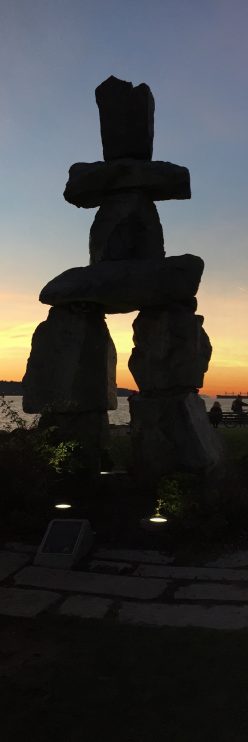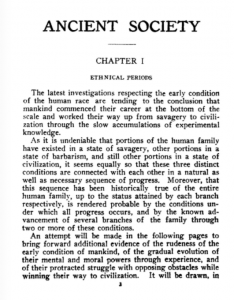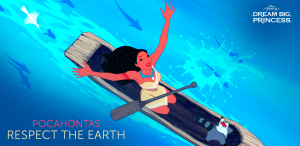Write a blog that hyper-links your research on the characters in GGRW. Be sure to make use of Jane Flicks’ GGRW reading notes on your reading list.
I have selected pages 136 – 143 from Green Grass, Running Water (GGRW).
Eli Stand Alone
The beginning of this chapter involves Eli Stand Alone imagining that he could see the “cracks were developing near the base of the dam, Stress fractures, they call them, common enough in any dam, but troublesome nonetheless, especially given the relatively young age of the concrete” (King 136). Firstly, Eli Stand Alone refers to Elijah Harper, born at Red Sucker Lake First Nation in Northern Manitoba. Elijah was removed from his family and placed in the residential school system. Upon his return to his community as an adult, “he resolved to enact change for First Nations and at 29 years old, was elected as Chief of Red Sucker Lake First Nation” (Working Effectively with Indigenous Peoples n.p). Elijah Harper stood alone against the Meech Accord and won (Schoolworkhelper n.p). This work won him the Stanley Knowles Humanitarian Award, the same that was presented to Nelson Mandela of South Africa (Nation Media n.p).
Eli Stand Alone resisted the dam that would flood his mothers home alone. However, King alludes to more than just standing alone against the corporations for the rights of the Blackfoot, he alludes to the dam not being of the best quality, which was demonstrated by Eli imagining that he could see the cracks forming on the dam, and that the “slumping” that had been discovered was even more of a concern. For Eli, it is about protecting the treaty rights. Elijah Harper was the only member who voted “against a debate that did not allow full consultation with the First Nations and that recognized only the English and the French as founding nations” (Flick 150).
Clifford Sifton
The character, Clifford Sifton, who works for the lawyers and corporations wanting the dam, it was demonstrated that these concerns are resented by the rest of non-Indigenous Albertans. This is achieved through the dialogue between Sifton and Eli. For example,
"Treaty rights, Cliff" "Almost as bad as French rights. Damn sure wish the government would give me some of that." "Government didn't give us anything, Cliff. We paid for them. Paid for them two or three times." "And so because the government felt generous back in the last ice age, and made promises it never intended to keep, I have to come by every morning and ask the same stupid question" (King 138)
Clifford Sifton refers to Sir Clifford Sifton (1861-1929) who aggressively promoted the settlement of the West and was a champion of the settlers who displaced the Native population. In addition, Sir Clifford Sifton was deaf throughout his life (Flick 150). The dialogue at the beginning of the chapter mimics this as Sifton doesn’t seem to be hearing Eli discuss the approaching storm. However, the above quoted dialogue also demonstrates two aspects of his character. One, that Cliff is resentful towards the ongoing resistance and continues to deny the treaty rights. And two, that he believes in the rhetoric within Canada relating to treaty rights. When Sifton comments about the promises being made “in the last ice age,” it alludes to the idea that those promises were made a long time ago and shouldn’t be held up any longer. His comments are about reinforcing the notion that the suffering happened many generations ago, and shouldn’t be applied to current generations because times have changed.
The idea that Indigenous Peoples were only affected many generations ago was also referred to again when Sifton said, “Who’d of guessed that there would still be Indians kicking around in the twentieth century.” As well as the comment, “Besides, you guys aren’t real Indians anyway. I mean, you drive cars, watch television, go to hockey games. Look at you. You’re a university professor.” These comments are juxtaposed between the colonization ideology and the reality of what life is like for modern-day First Nations.
Sifton continues to refer to how Eli, Latisha and Lionel are not traditionalists but of course, even back in the day, non-Indigenous people didn’t watch TV, drive cars or have jobs as university professors as of course, in the nineteenth century, they didn’t exist, for either Indigenous or non-Indigenous peoples. As King eloquently demonstrates through these two characters, it is ridiculous to expect any person living in North America today that they would not access these technologies. Sifton continues to try to downplay the importance of Eli’s family home while just as Sir Clifford Sifton likely did back at the turn of the century, the investors needs were more important. The home was no longer a home but rather a “pile of logs in the middle of a spillway” (King 142).
There were a few other characters in this chapter, Orville, Leroy and a man from Michigan which I won’t go into however, the interspersed story of the Sun Dance which involved ceremonies, play, dancing, and horseback riding, likely was used by King to illustrate that the story of Eli didn’t happen “in the last ice age.” It happened in today’s generation. First Nations continue to participate in their own cultural practices which continue to be drastically different from the non-Indigenous, despite still utilizing modern-day technologies such as cars and televisions.
Works Cited
Flick, Jane. “Reading Notes for Thomas King’s Green Grass Running Water.” Canadian Literature 161-162. (1999). Web. King, Thomas. Green Grass Running Water. Toronto: Harper Collins, 1993. Print. http://www.ictinc.ca/blog/elijah-harper-the-man-with-a-feather-who-changed-the-course-of-historyGreen Grass, Running Water Character Analysishttp://www.nationmedia.ca/elijahharper/bio.html



